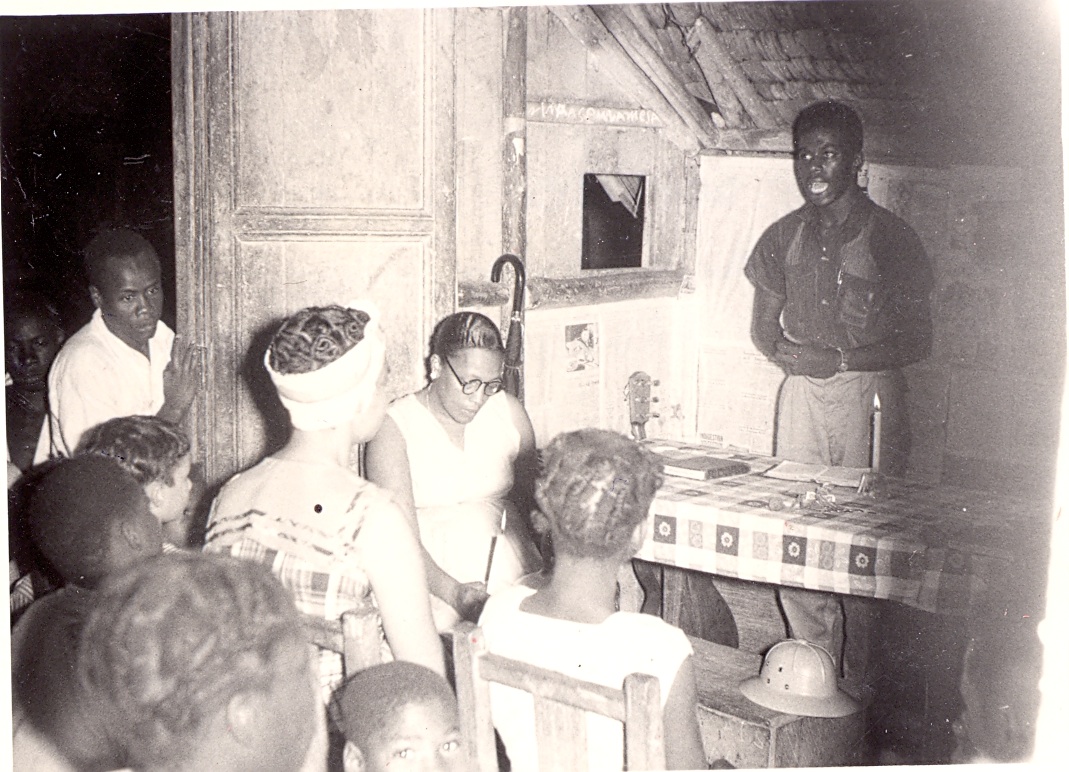In 1953 Colombian president Gustavo Rojas Pinilla passed the Treaty of Missions, an agreement that designated the most unpopulated regions of the country—geographically large but representing a small percentage of the population—as Mission Territories under the direction and control of the Catholic Church.
In these years the Mennonite Brethren Board of Foreign Missions (of North America) had two mission stations in the Chocó region of Colombia. Under the new legislation, the Chocó was determined to be a Mission Territory.

The treaty had ever-changing consequences for Protestants in Mission Territories, including the Mennonite Brethren in the Chocó. In 1955 the treaty reached its most restrictive point, outlawing all non-Catholic religious services—public or private, in chapels or in homes—in the territories, and prohibiting Colombians from meeting with foreign missionaries.
In these years, the Colombian Mennonite Brethren in Chocó met in believers’ homes for worship services and Bible study, despite the prohibitions.
One Sunday morning in 1956 two policemen interrupted a Mennonite Brethren worship service at a home in the village of Istmina and ordered everyone to leave. In response a believer stepped forward and told the policemen that the group had gathered “not because they were invited with church bells like in the Catholic church but because they were hungry for the Word,” and that they would not be intimidated.
Next the policemen questioned Francisco Mosquera, who was on the church council at that time. They asked him if he ever had services in his home, and Mosquera answered, “Yes, every day.” When further questioned on how many such services he had hosted, he said, “My family is evangelical, and just as I don’t know how many times I eat, I don’t know how many times I have conducted a service in my home. We have them every day.”
The policemen then left, but only after threatening to shoot should they encounter the group gathered a second time. Despite these threats, the group continued to meet regularly.
Their willingness to meet in a variety of locations, including riversides and members’ homes, decoupled worship from any particular place and reaffirmed the Anabaptist tenet of the gathered community as the church, not any particular building or location.
Mosquera likened their worship to eating, a daily practice necessary for survival, while the other believer described the impetus as a “hunger.” Amidst persecution, Chocoano believers came to see their faith, the gathering of believers, and the sharing of the Word as vital a practice as eating, as necessary as the fish and plantain they ate daily.
Sources: Goff, James E. “The Persecution of Protestant Christians in Colombia, 1948 to 1958, with an Investigation of its Background and Causes.” Th.D. Diss., San Francisco Theological Seminary, 1965; “Minutes of the Meeting of the Missionary Council,” June 10-15, 1957. Missionary Council: 1957-1960. A250-13 Records of Mennonite Brethren Missions/Services International. Center for Mennonite Brethren Studies, Fresno, California.
Written by: Elizabeth Miller